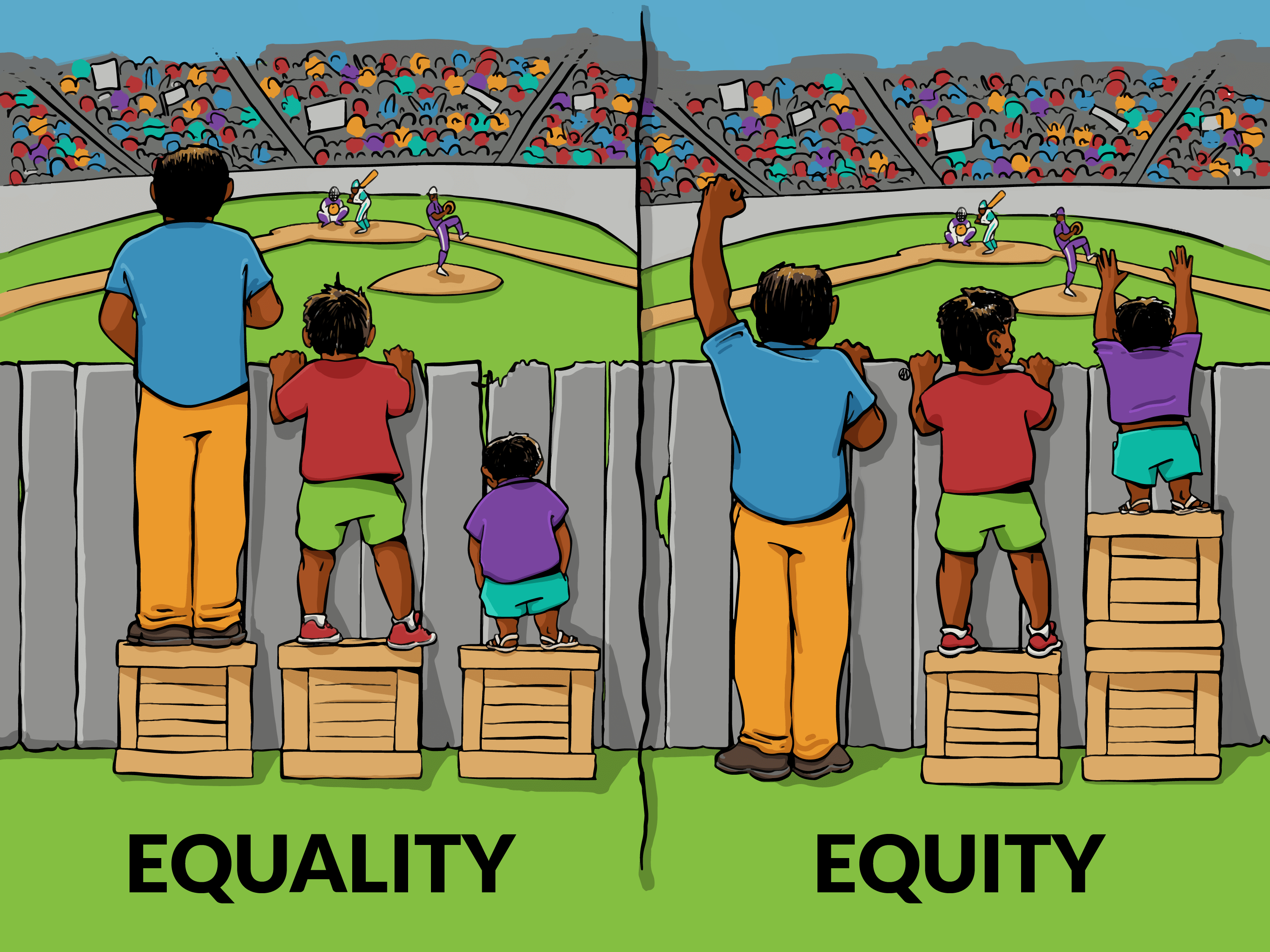This is the second in a series on doing educational equity right.
In a previous post, I identified three rules for “doing educational equity right”:
1. When aiming for equity, we should level-up instead of leveling-down.
2. We should focus on closing gaps between affluent students and their disadvantaged peers, not between high-achieving students and their lower-achieving peers.
3. We should focus equity initiatives primarily on class, not race.
These rules will not only result in smart policy designs, but also make it likelier that the political right will get on board the equity train.
Now let’s apply those rules to the topic of school finance.
In some ways, this is the easiest issue around which to gain consensus across the political spectrum, at least conceptually. While some might assume that conservatives would oppose redistributing resources from rich areas to poor ones, in my experience, most right-of-center reformers support the idea, as long as it’s attached to mechanisms to ensure that the money is well spent. Many of us, after all, have long promoted “weighted student funding,” which is centered on the notion that disadvantaged students need additional resources in order to meet high standards (and that money should follow the child to the school they actually attend). Funding is probably the one area where conservatives can cheer the meme below, as we agree that it’s not enough to “equalize funding”; high-poverty schools need more money per pupil than affluent ones. In other words, we need to “level up.”

Gladly, as my colleague Adam Tyner argued in Fordham’s Think Again series last year, America’s current approach to school funding is dramatically more progressive than it used to be, and almost everywhere it already hits the mark in terms of equalizing resources across rich and poor schools. That’s a big change from the days of the “savage inequalities” that Jonathan Kozol wrote so persuasively about.
The next frontier, as Adam argues, is making our system even more progressive than it already is. If folks on the left want to have any chance to get conservatives to support that agenda, they need to pay attention to my rules number two and number three. Namely, greater progressivity in funding should be based on students’ socioeconomic status—not their achievement level and not their race.
After all, as I wrote last time, there’s no valid moral argument for focusing on low-achieving low-income kids over high-achieving low-income students. Both groups are poor, both groups come to school with disadvantages that are likely to keep them from achieving their full potential, and both groups rely on the K–12 system to help them be all they can be.
Likewise, it’s hard to argue that we should spend more dollars on schools serving middle-class Black or Hispanic students than on schools serving low-income White or Asian kids.
Focusing on students’ socioeconomic status, on the other hand, makes sense morally, politically, and educationally. Simply put, we know it costs more money to help low-income students achieve their full academic potential.
Some of that is because addressing the needs of disadvantaged kids costs real money—think of additional mental health supports for kids who have experienced trauma, for example.
But, as Adam argues, the primary reason that we need to spend more on low-income students is because of teacher labor markets. On average, teachers are less willing to teach in high-poverty schools. Maybe they don’t want to drive to low-income neighborhoods, or they fear that such schools will face greater behavioral challenges, or they just know that kids experiencing disadvantage need teachers willing to work harder and smarter in order to help them succeed. When we pay teachers the same regardless of which school they work in—the practice of the vast majority of districts in America—we end up in a situation in which high-poverty schools have lower-quality teachers, on average, than affluent ones.
There are a couple of ways to fix that, both of which involve spending significantly more money in high-poverty schools. One is to ensure, through state and local funding formulas, that high-poverty schools receive lots more revenue, so they can afford to pay their teachers more. Another way is for districts to adopt a Dallas-style or D.C.-style teacher pay initiative, in which highly-effective teachers are provided significantly larger salaries in order to teach in the highest-poverty schools—and ineffective teachers in those schools are transferred elsewhere or, ideally, out of the profession.
Now let’s be real: Many of us on the right are not crazy about increasing spending for traditional public schools. Many, if not most, such schools have a long history of squandering much of the money that taxpayers have thrown at them (see the federal ESSER funds, for example). And we can point to examples, especially from high-spending, high-tax states like New York and New Jersey, where a boatload of money hasn’t fixed dysfunctional school systems.
We view this kind of spending skeptically because we know that powerful unions tend to ensure that any extra money gets soaked up by more generous teacher contracts. Rather than targeting funding to high-need schools or to teachers willing to work in them, unions push for across-the-board raises, Cadillac-style benefits packages, and retiree health care, all of which is great for their members but largely unrelated to what’s best for kids.
So to get conservatives on board, progressives need to embrace initiatives that come with a quid pro quo. Once state policy has leveled up school funding between rich and poor districts, additional money for low-income schools should come in the form of competitive grants tied to significant reforms. If districts want more money, they should agree to (and get their unions to agree to) initiatives to recruit and retain highly effective teachers in their neediest schools via differential pay—and convince their ineffective teachers in those schools to find another line of work.
What progressives shouldn’t do is focus the school funding debate around race, as the media tends to do, or aim to allocate extra money for low-achieving students, rather than low-income kids, as Governor Newsom is doing.
If folks on the left are willing to push the unions to accept serious reforms in return for more money, those of us on the right will be willing to redistribute resources in the cause of greater equity. Sounds like a win-win to me.
Michael J. Petrilli is president of the Thomas B. Fordham Institute, visiting fellow at Stanford University’s Hoover Institution, and an executive editor of Education Next.
This post originally appeared on the Fordham Institute’s Flypaper blog.



